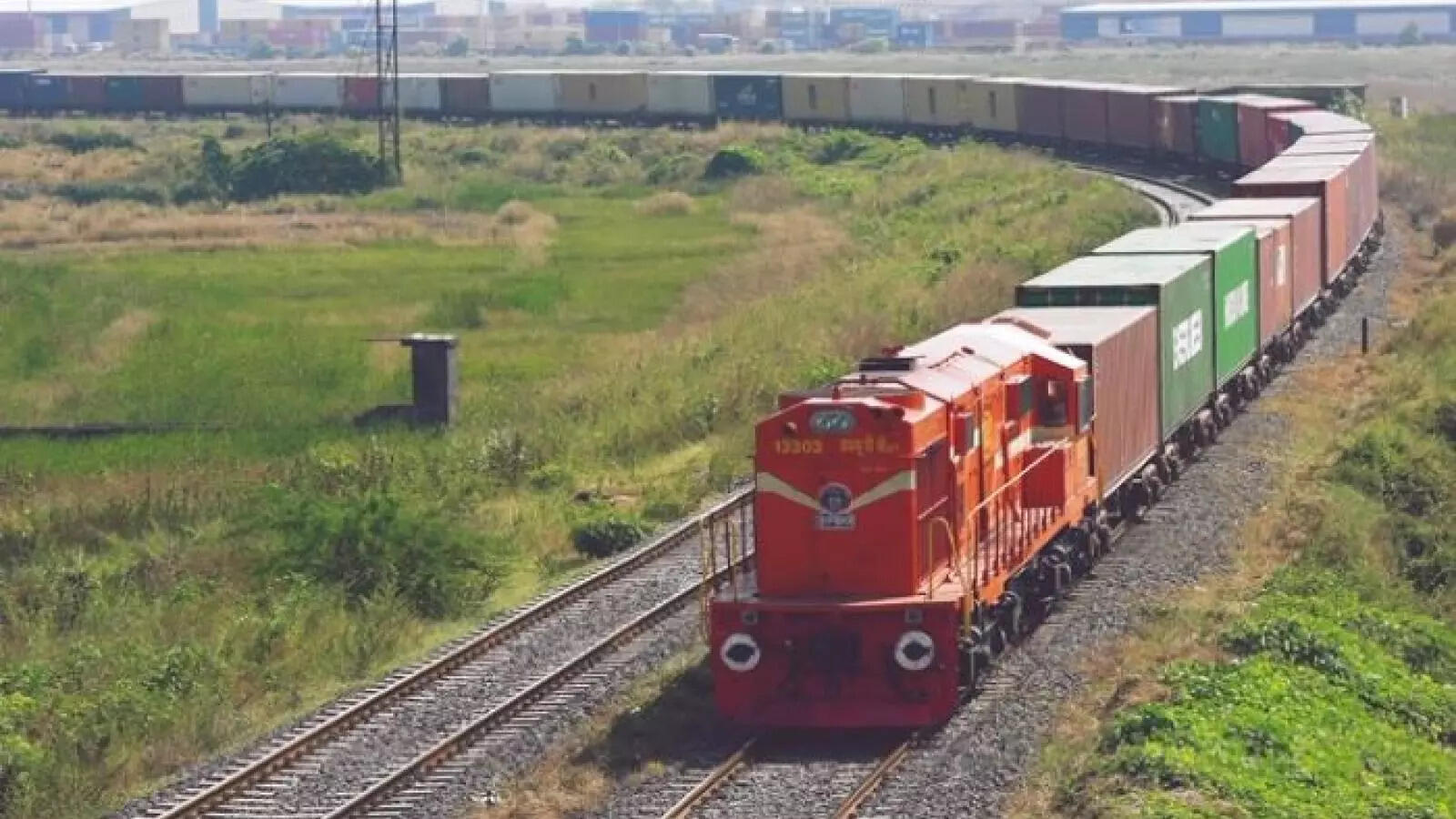Railways Cuts Cement Freight to 90 Paise Per Tonne-Km: New Policy Promises Cheaper, Cleaner Logistics
Railway Minister Ashwini Vaishnaw has introduced a major overhaul of cement logistics, unveiling a new policy that standardises freight charges and encourages bulk transportation through advanced tank containers . The Ministry says the move will cut logistics costs, boost efficiency, and ultimately benefit both cement manufacturers and end consumers.
Under the new structure, the freight rate for bulk cement has been fixed at 90 paise per tonne per kilometre, replacing the older system that relied on multiple slabs based on weight and distance. Officials said the simplified model will make cement movement more predictable, economical, and industry-friendly.
Launching the policy, Vaishnaw emphasised the environmental and economic benefits of shifting away from traditional cement bags.
"This new innovation will support cleaner, more sustainable transportation at a significantly reduced cost, as cement bags will no longer be required," he said.
A key highlight of the reform is the push for tank containers - a new wagon category designed specifically for bulk cement. These containers enable seamless multi-modal movement, allowing cement to travel through a combination of train-trailer-train routes.
Railway officials said they have developed a flexible logistics solution using these containers to enhance long-haul connectivity. To support this system, Indian Railways will help set up bulk cement terminals across the country, especially near major consumption hubs.
The move has received enthusiastic support from cement manufacturers. Aparna Dutt Sharma, Secretary General of the Cement Manufacturers’ Association, said the reforms match industry expectations and could significantly reshape the sector.
She pointed out that bulk cement accounts for 18–20% of total consumption, yet only 8–9% moves by rail. With 60–65% of the cement market located within 300 km of production units, Sharma said the new policy "will be a game changer".
Manufacturers added that transporting bagged cement often drives up costs due to loading, unloading, storage, and last-mile requirements.
One manufacturer noted that "the new bulk policy will eliminate several secondary charges, including handling and transportation costs," and said terminal locations will be planned jointly with the industry.
The policy is expected to significantly improve cement logistics by reducing manual handling, lowering packaging waste, and speeding up deliveries. With India’s construction sector expanding rapidly, the new bulk movement strategy could become a cornerstone of cost-effective infrastructure development.

Under the new structure, the freight rate for bulk cement has been fixed at 90 paise per tonne per kilometre, replacing the older system that relied on multiple slabs based on weight and distance. Officials said the simplified model will make cement movement more predictable, economical, and industry-friendly.
Launching the policy, Vaishnaw emphasised the environmental and economic benefits of shifting away from traditional cement bags.
"This new innovation will support cleaner, more sustainable transportation at a significantly reduced cost, as cement bags will no longer be required," he said.
You may also like
- 'Little boy with hair like Baba': Sachin Tendulkar recalls first meeting with Sathya Sai Baba; pays tribute at centenary
 Poster war begins in LoP Gandhi's constituency as VHP thanks him for NDA victory in Bihar
Poster war begins in LoP Gandhi's constituency as VHP thanks him for NDA victory in Bihar- [Update] Elevation Capital Offloads Paytm Shares Worth INR 1,556 Cr
- US fund withdrawal pushing WHO to slash over 2,000 jobs by June 2026: Report
 "Suicide is haram in Islam, killing of innocents is a grave sin": Owaisi rejects Delhi Blast accused Nabi's remarks in video
"Suicide is haram in Islam, killing of innocents is a grave sin": Owaisi rejects Delhi Blast accused Nabi's remarks in video
tank Containers to Transform Movement
A key highlight of the reform is the push for tank containers - a new wagon category designed specifically for bulk cement. These containers enable seamless multi-modal movement, allowing cement to travel through a combination of train-trailer-train routes.
Railway officials said they have developed a flexible logistics solution using these containers to enhance long-haul connectivity. To support this system, Indian Railways will help set up bulk cement terminals across the country, especially near major consumption hubs.
Industry Calls It a ‘Game Changer’
The move has received enthusiastic support from cement manufacturers. Aparna Dutt Sharma, Secretary General of the Cement Manufacturers’ Association, said the reforms match industry expectations and could significantly reshape the sector.
She pointed out that bulk cement accounts for 18–20% of total consumption, yet only 8–9% moves by rail. With 60–65% of the cement market located within 300 km of production units, Sharma said the new policy "will be a game changer".
Manufacturers added that transporting bagged cement often drives up costs due to loading, unloading, storage, and last-mile requirements.
One manufacturer noted that "the new bulk policy will eliminate several secondary charges, including handling and transportation costs," and said terminal locations will be planned jointly with the industry.
A Boost for Efficiency and Sustainability
The policy is expected to significantly improve cement logistics by reducing manual handling, lowering packaging waste, and speeding up deliveries. With India’s construction sector expanding rapidly, the new bulk movement strategy could become a cornerstone of cost-effective infrastructure development.









